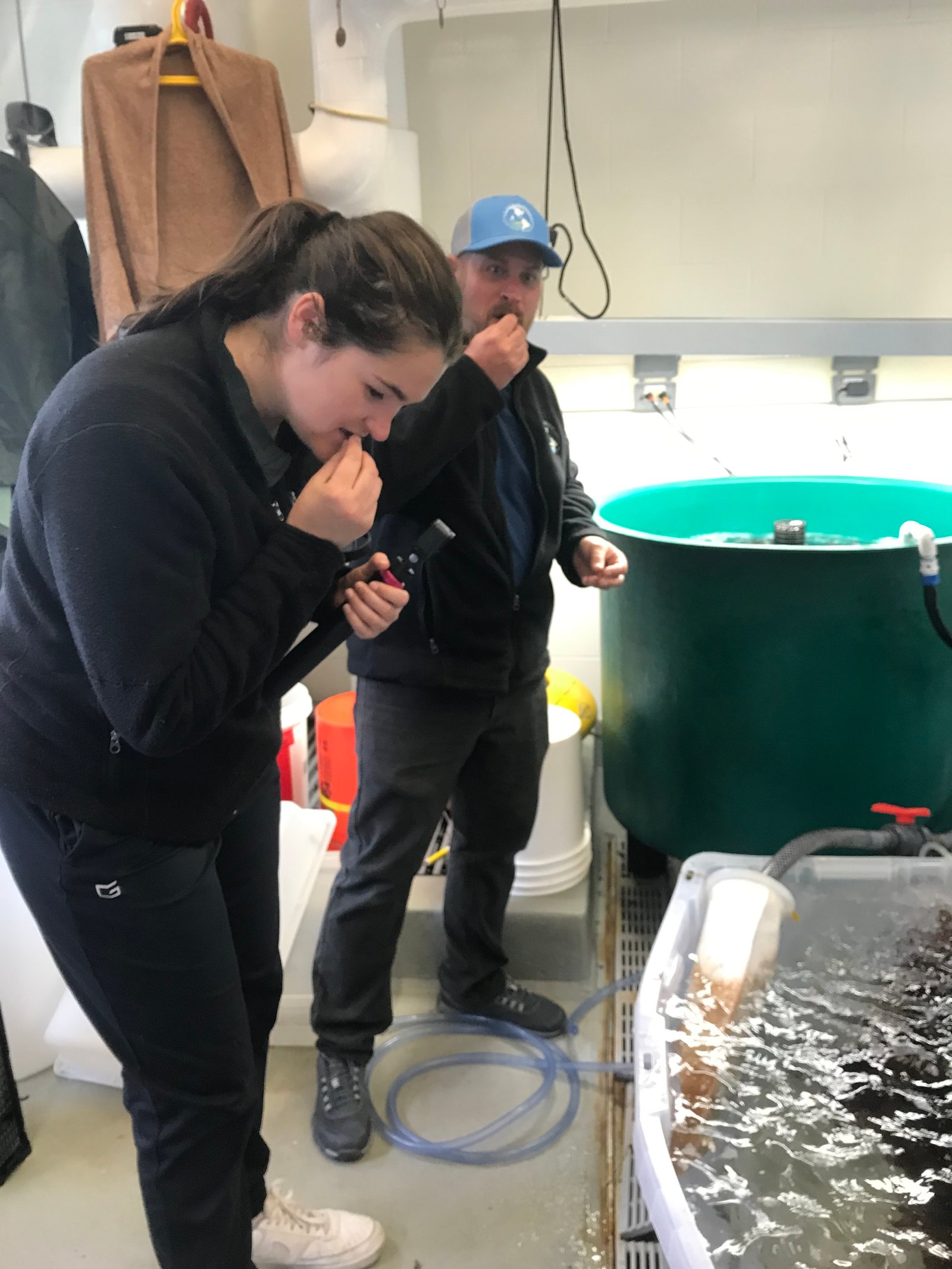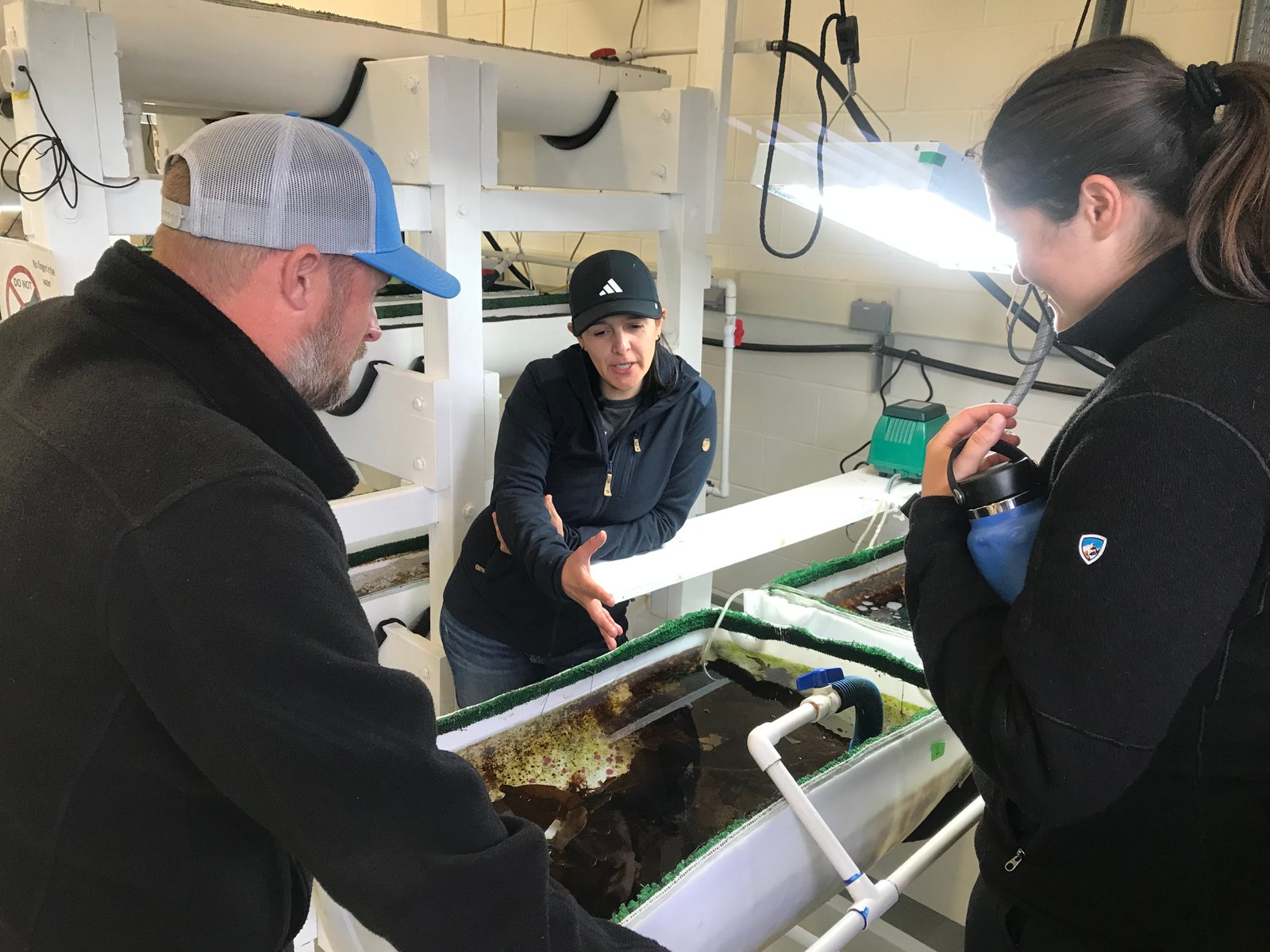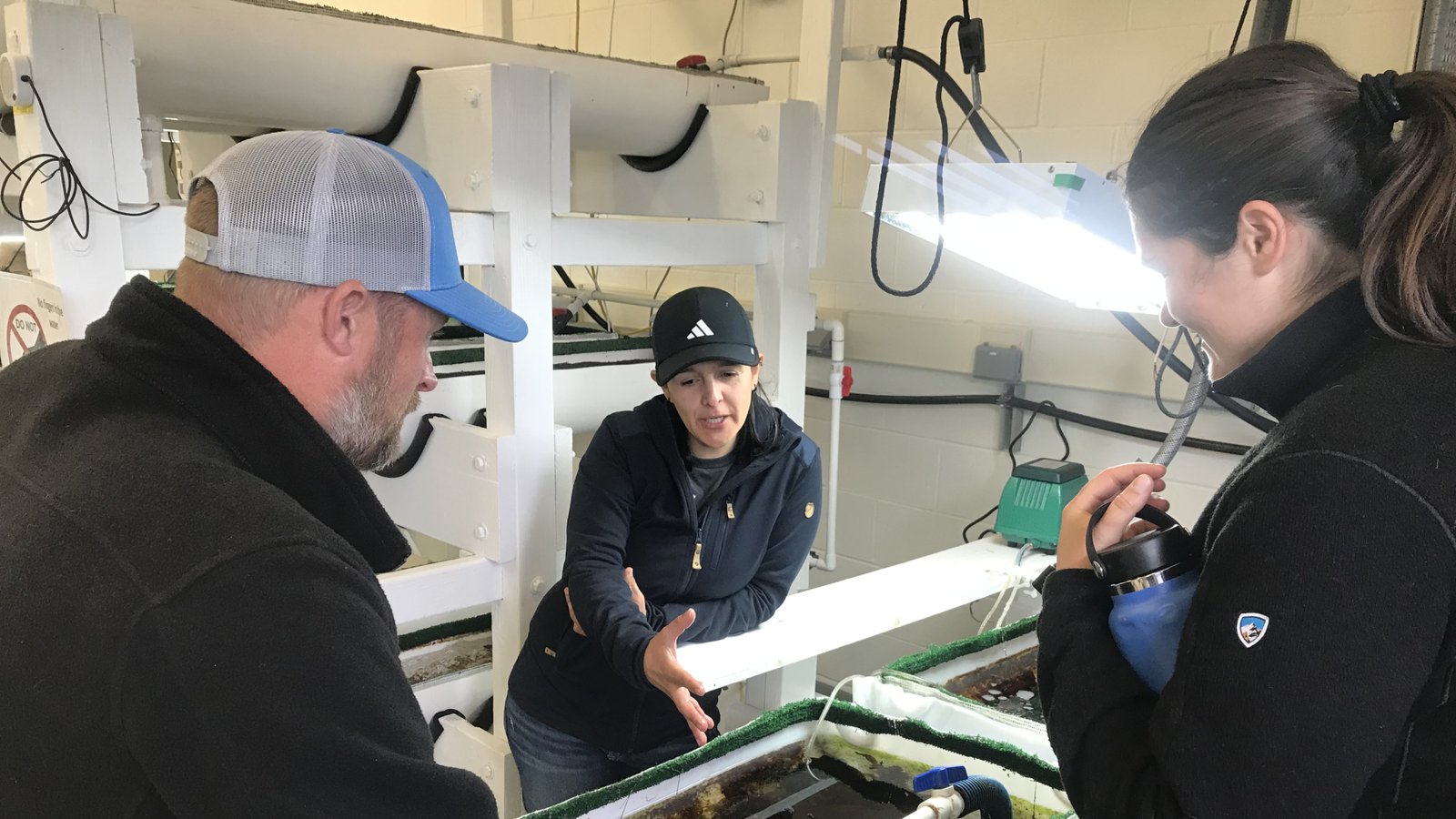Hello All,
While in Juneau, Alaska, we had the wonderful opportunity to meet Dr. Schery Umanzor, a professor at the University of Alaska Fairbanks and a passionate marine ecologist. Thanks to our friends Theresa and Jeff, we were invited into her marine research lab to learn firsthand about the important work she’s leading, work that focuses on one of the Pacific Northwest’s most vulnerable species: the pinto abalone.

Dr. Umanzor is known for her expertise in seaweed ecology, particularly her work with kelp forests and sustainable seaweed farming. In recent years, she has collaborated closely with seaweed harvesters to develop tools for choosing ideal farm sites and for quantifying the ecological impact of seaweed farming, such as measuring the carbon and nitrogen removed from marine ecosystems each growing season. Now, her research has taken a critical turn. She is applying her knowledge of marine systems to support the cultivation of red seaweeds and the restoration of pinto abalone, a species in serious decline.

Pinto abalone (Haliotis kamtschatkana) are algae-grazing marine snails found along the rocky coastlines of the Pacific Northwest, from Alaska down to Baja California. They are the only abalone species native to British Columbia waters and play an essential role in maintaining healthy kelp forest ecosystems. These animals also hold deep cultural importance for many Indigenous communities, who have respected and harvested them for generations.
Unfortunately, pinto abalone populations have plummeted over the last several decades. They are now listed as endangered in Canada and considered a species of concern in the United States. A number of factors have contributed to this decline, beginning with decades of unregulated harvesting. Abalone were extensively collected for their meat and their beautiful shells, with little oversight or understanding of how slowly they grow and reproduce. Although commercial harvesting was banned in British Columbia in 1990, illegal poaching continued, adding pressure to already weakened populations.
Because pinto abalone reproduce through a method called broadcast spawning, where individuals release their eggs and sperm into the water column, their chances of successful reproduction decrease dramatically when population densities are low. As abalone became more scarce, they became too far apart to effectively reproduce, a challenge known as the Allee effect.
On top of this, habitat degradation has further reduced their chances of survival. Pinto abalone depend on healthy kelp forests for both food and shelter, but these ecosystems have been damaged by warming oceans, nutrient pollution, and overgrazing from unchecked sea urchin populations. Coastal development and runoff have also contributed to the loss of suitable rocky habitat. Climate change only intensifies these problems. Rising ocean temperatures place stress on young abalone and reduce the nutritional quality of their algal food. At the same time, ocean acidification weakens their calcium carbonate shells, leaving them more vulnerable to damage and predation. In many regions, increased pressure from predators, particularly on juveniles, has made it nearly impossible for wild abalone populations to recover naturally.
This is where Dr. Umanzor’s research becomes so important. She and her students are developing hatchery protocols to raise healthy pinto abalone in a controlled environment, with the goal of eventually restoring them to the wild. The process begins with mature adult broodstock that are encouraged to spawn using a gentle chemical cue, hydrogen peroxide, to trigger the release of eggs and sperm. These gametes are then hand-fertilized by the research team. Once fertilized, the microscopic larvae are carefully raised in tanks under ideal conditions, where they receive a steady diet of algae and are provided with optimal water flow, oxygen levels, and temperature to support their growth.

Raising abalone in the lab is no easy task. The early life stages are fragile, and survival rates can be low. That’s why Dr. Umanzor’s team is focused on refining every step of the process, boosting hatchery success while maintaining the genetic diversity and health of the animals. Each advancement brings us closer to the possibility of reintroducing these abalone into the wild in a way that supports both ecosystem restoration and cultural renewal.

Saving pinto abalone isn’t just about protecting a single species, it’s about restoring balance to entire coastal ecosystems, supporting Indigenous stewardship, and rebuilding our connection to the ocean. During our visit, Dr. Umanzor welcomed Theresa, Tim, and me with warmth and enthusiasm, answering all of our questions with genuine passion. Her excitement about marine ecology, and her encouragement for the work we’re doing aboard our own research vessel, was incredibly inspiring. Thank you so much to Dr. Umanzor for the incredible and enlightening visit.
From the Field,
Grace

